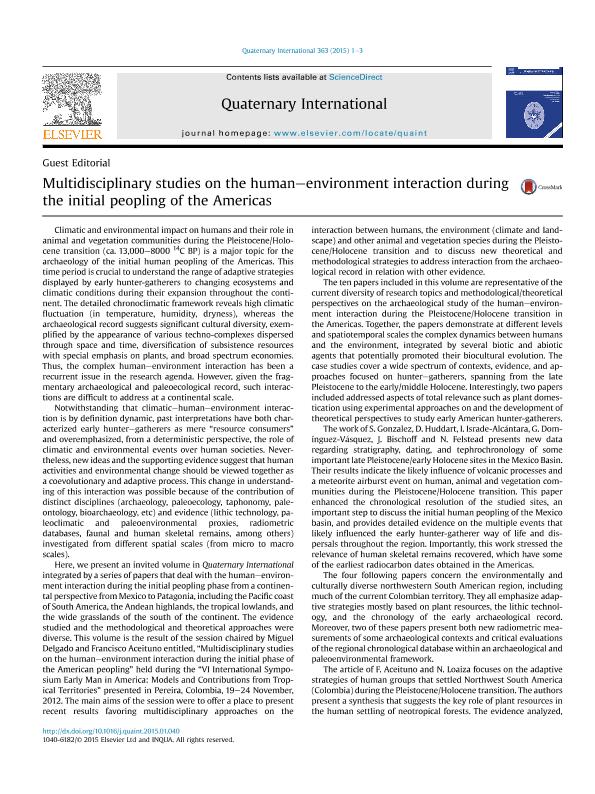Artículo
Multidisciplinary studies on the human-environment interaction during the initial peopling of the Americas
Fecha de publicación:
03/2015
Editorial:
Elsevier
Revista:
Quaternary International
ISSN:
1040-6182
Idioma:
Inglés
Tipo de recurso:
Artículo publicado
Clasificación temática:
Resumen
Climatic and environmental impact on humans and their role in animal and vegetation communities during the Pleistocene/Holocene transition (ca. 13,000–8000 14C BP) is a major topic for the archaeology of the initial human peopling of the Americas. This time period is crucial to understand the range of adaptive strategies displayed by early hunter-gatherers to changing ecosystems and climatic conditions during their expansion throughout the continent. The detailed chronoclimatic framework reveals high climatic fluctuation (in temperature, humidity, dryness), whereas the archaeological record suggests significant cultural diversity, exemplified by the appearance of various techno-complexes dispersed through space and time, diversification of subsistence resources with special emphasis on plants, and broad spectrum economies. Thus, the complex human–environment interaction has been a recurrent issue in the research agenda. However, given the fragmentary archaeological and paleoecological record, such interactions are difficult to address at a continental scale.
Archivos asociados
Licencia
Identificadores
Colecciones
Articulos(CCT - LA PLATA)
Articulos de CTRO.CIENTIFICO TECNOL.CONICET - LA PLATA
Articulos de CTRO.CIENTIFICO TECNOL.CONICET - LA PLATA
Citación
Delgado Burbano, Miguel Eduardo; Aceituno, Francisco Javier; Loaiza, Nicolás; Multidisciplinary studies on the human-environment interaction during the initial peopling of the Americas; Elsevier; Quaternary International; 363; 3-2015; 1-3
Compartir
Altmétricas




